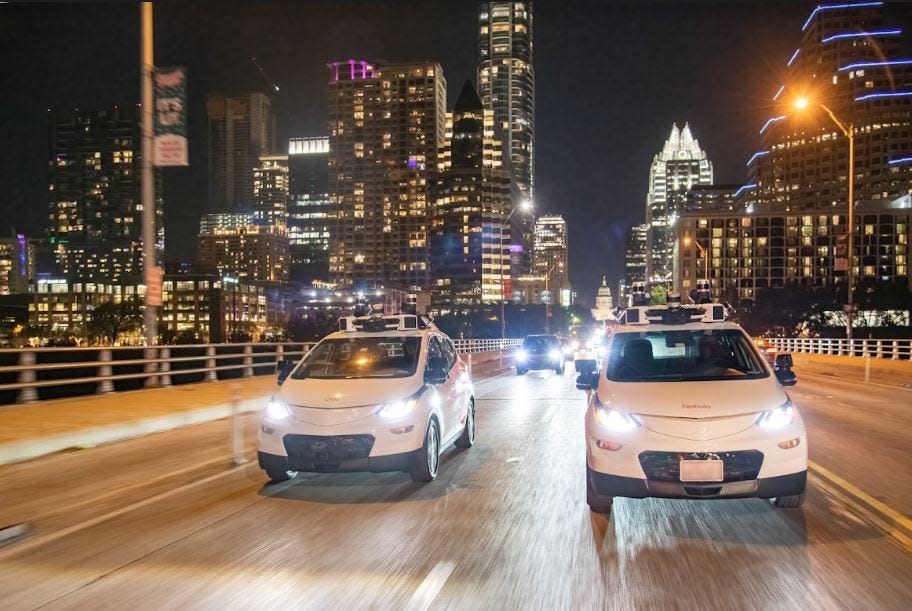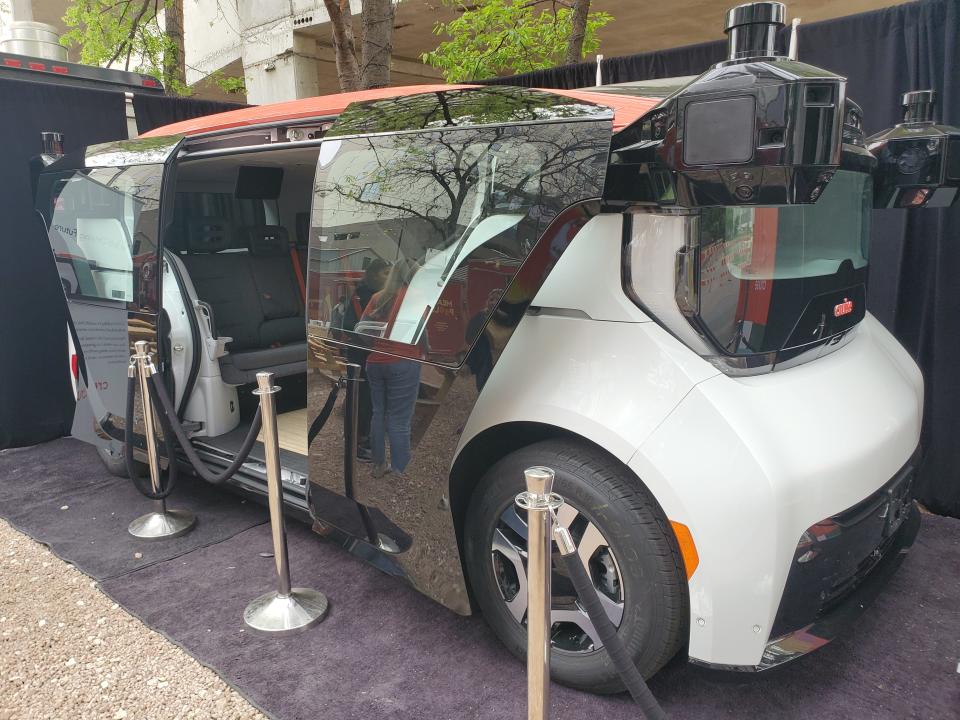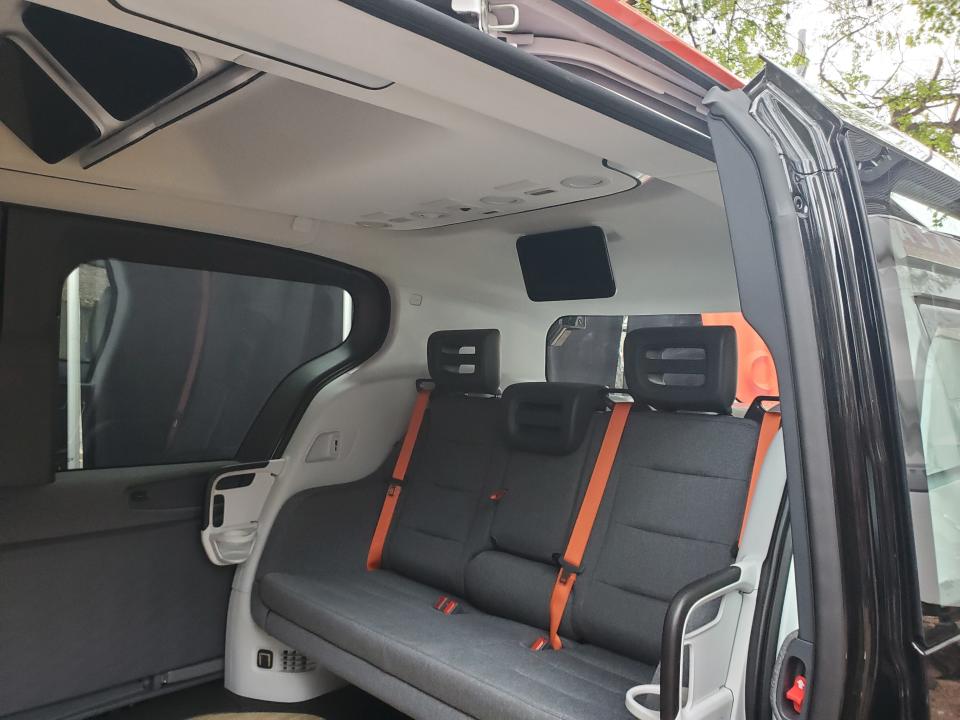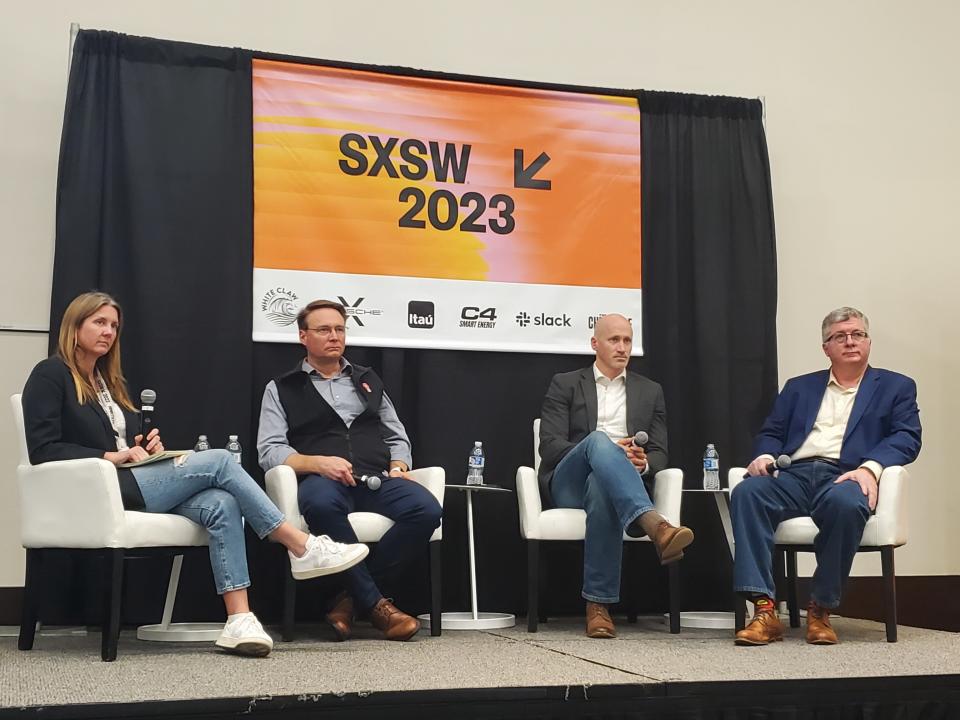Are self-driving cars here? Experts say they could soon revolutionize trucking, rideshare

Cars with no one in the driver seat have been giving rides to the public in Austin in recent months, thanks to Cruise, an autonomous vehicle startup that offers rideshare downtown.
It's a future barely imaginable even a few years ago. But could this type of technology become commonplace?
The future of autonomous technology was a focus of several sessions at South by Southwest as industry experts and executives discussed what could be on the horizon for self-driving vehicle technology, including its potential uses in trucking and rideshare. This included Cruise CEO Kyle Vogt, who said the industry is in a scale-up phase.
“It’s the golden years of driverless technology, migrating from driving to being driven,” Vogt said.
Vogt also announced at SXSW that Austin will see even more driverless technology in the coming weeks as the company tests its new, completely driverless and pedal-less Origin taxicab.
Could companies scale autonomous vehicles?
Self-driving vehicles are being tested by a number of companies in the United States, and generally rely on sensors, cameras, radar and artificial intelligence to travel without human intervention. Most companies piloting the autonomous technology have limited fleets and locations.

That includes Cruise, a subsidiary of General Motors, which has been testing its driverless car technology in San Fransico before it expanded to Austin and Phoenix last year. The company's cars are able to drive and pick up passengers with no human in the driver's seat.
“When people in the community see (a self-driving car) for the first time, it’s definitely a double take,” Vogt said, adding the next reaction is generally a thumbs up. “I interpret it as, 'This is cool. The future is coming but it’s coming to our community.'”
Mary Barra, CEO of General Motors, was part of a discussion on autonomous vehicles with Vogt, and said she views autonomous technology and driver assistance technology as key for GM.

”We look at it as a very important part of the future for the way people are going to move and the way goods are going to move," Barra said, adding she considers the technology to be better, safer and more confident than traditional drivers.
Vogt predicted that Cruise, which was founded in 2013, could scale up quickly and expand to other cities. He said the first eight years at Cruise felt like science fiction, but now that the company has figured out the technology, adding more cities will be easier.
The company has several hundred vehicles between the three cities, including dozens operating in Austin, primarily at night.
You now can ride in a driverless car in Austin, as GM-owned Cruise expands rideshare services
How does Austin fit in?
Cruise is not the first such company in the Austin area. In 2019, Google’s autonomous vehicle company Waymo pulled out of the city after testing its autonomous vehicle technology here for several years. Argo AI, a Ford subsidiary that was testing self-driving technology in Austin since 2019, including rideshare and delivery partnerships with Lyft and Walmart, shut down last year.

Vogt also announced Cruise will soon be testing its new vehicle, the Origin, in Austin. The new vehicles won’t be open to the public, at least at first, but the company said it could be in a “matter of months.” Cruise Origin is made in collaboration between GM and Cruise investor Honda and is designed specifically for ridesharing.
Cruise showed off the vehicle on Wednesday on Rainey Street during SXSW. The shuttle-like car has no steering wheel, no gas or brake pedals and has a spacious interior with seats that face each other.
Texas is a testbed for autonomous technology. Aurora, a self-driving vehicle company, has operated a trucking pilot program in partnership with trucking company Schneider between Houston and Dallas since 2021. As of 2017, companies can test autonomous vehicles in the state as long as they have insurance, are equipped with video recording devices and are capable of following traffic laws. The manufacturers are considered responsible for any collisions or broken traffic laws.
As Argo AI shuts down, will its driverless technology leave Austin's streets?
What about Austin-based Tesla?
All Tesla vehicles produced after 2014 are outfitted with some level of enhanced driver assistance technology, but Tesla also offers a software called "full self-driving" as an add-on feature that enables vehicles to switch lanes, park, get on and off highways and recognize traffic signs and lights, for $15,000 or $199 a month. Despite its name, Tesla’s full self-driving technology is not considered to be truly autonomous by industry experts or even by Tesla itself and requires active driver supervision and for drivers to keep their hands on the wheel.

Vogt and Barra both took aim at Tesla during SXSW.
“Calling something 'self-driving' that you still have to grab the wheel on is confusing consumers, and because those moments when you have to grab the wheel and take control can be terrifying, it's sending the wrong message to consumers about self-driving, and that's a problem," Vogt said.
Barra agreed, saying there’s a line between drivers' assistance technology and full driverless technology, and confusing people is "not a good thing."
Vogt said he thinks all companies working on autonomous technology are ultimately going to the same place, aiming for safe products at low costs.
“That's the future we want to live in," Vogt said. "I think the challenge is how you get there.”
The Dawn Project took aim at Tesla in pricey Super Bowl ads. So who are they?
What industries could autonomous driving help revolutionize?
Vogt views autonomous technology as the future of rideshare, even after the two best-known rideshare companies shut down their self-driving units. Uber sold its autonomous vehicle project in 2020 to Aurora. Lyft also sold its self-driving unit in 2021.

“It’s essential from a cost perspective that all the ride hail networks make the transition,” Vogt said. "Once these products become wildly available at low costs, something's going to have to change."
In a separate SXSW session, Sterling Anderson, co-founder and chief product officer of Aurora, was more skeptical of the potential for fast transformation of the rideshare industry but did predict autonomous technology could soon revolutionize the trucking industry.
"When you look at autonomy for trucks, the value proposition is extraordinary," Anderson said. "Not just on cost, not just time to fill in a massive hole in the trucker shortage that is expected to get worse over the next several years, but in particular to change the paradigm of the transportation product that's available in trucking today."
He said while Aurora plans to develop rideshare technology, robotaxis and trucking have "very different unit economics."
For rideshare, he said, a very large autonomous fleet is needed to see a cost difference compared to using human drivers. He also said rideshare is hard technology to develop since city to city and even block to block the driving experience is very different, but with trucking, the vehicles have more predictable routes and environments.
Anderson acknowledged autonomous vehicle hardware is more expensive initially. But he said in the long term, as truck fleets grow, costs will come down because trucks can operate 24 hours a day, human costs will eventually reduce, and the vehicles can be programmed to travel at consistent speed limits, saving on fuel. He also said it will improve supply chains and delivery costs.
He was joined at the session by other industry experts including, Rob Reich, executive vice president of Schneider, who said it is important for the trucking company to be an early leader in the technology.
“It’s better to be on the front end and influence and make sure (Anderson and Aurora) understand the way our networks work, and here’s how to maximize the technology,” Reich said. “We’d rather be part of the design and influence than be the recipient of somebody else's design.”
This article originally appeared on Austin American-Statesman: Are self-driving cars here? SXSW experts say autonomous vehicles could change trucking, rideshare
